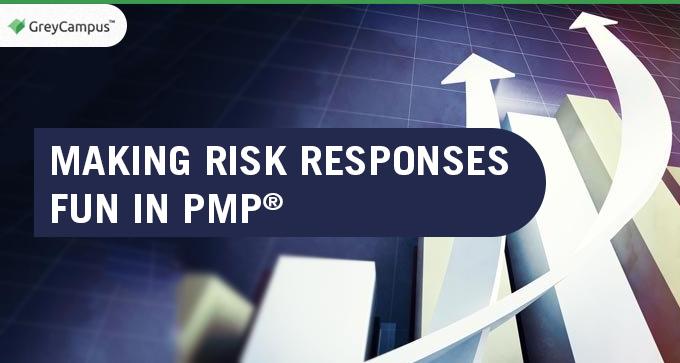Making Risk Responses for the PMP Fun
Responding to risk is one of my favorite parts of the exam. I would like to help it become one of yours as well. First, we will see the ways that PMI has set aside to respond to risk and then we will look at a fun way to remember these responses. These definitions come from the PMBOK 5th edition pg 344-346.
Definitions:
Strategies for risk opportunities:
1. Exploit – the organization wishes to ensure that the opportunity is realized. This strategy seeks to eliminate the uncertainty associated with a particular upside risk by ensuring the opportunity definitely happens.
2. Enhance – to increase the probability and/or the positive impacts of an opportunity.
3. Share – involves allocating some or all of the ownership of the opportunity to a third party who is best able to capture the opportunity for the benefit of the project.
4. Accept – being willing to take advantage of the opportunity if it arises, but not actively pursuing it.
Strategies for risk threats:
1. Avoid – act to eliminate the threat or protect the project from its impact.
2. Transfer – to shift the impact of a threat to a third party, together with ownership of the response. To give another party responsibility for its management.
3. Mitigate – act to reduce the probability of occurrence or impact of a risk.
4. Accept – a decision to acknowledge the risk and not take any action unless the risk occurs.
Now to associate some fun! Let’s associate these strategies via scenarios we are familiar with. How about that time at the party when you saw “The Girl”!
Examples:
Scenario #1– An opportunity awaits! What response strategy is the best way to advance into a relationship with her?
1. Exploit – I will do what it takes to get her contact information. I will confront her for her number and if she does not give me the right one, I will get it from somebody else.
2. Enhance – I will order the same drink that she is having, walk into her vicinity, and maybe give her a wink.
3. Share – I will use a trusty wingman to go talk to her.
4. Accept – If she wants to come over to talk to me, then I will talk with her.
Scenario #2– A threat appears! What response strategy is the best way to make sure that my time is not ruined?
1. Avoid – I should leave the party.
2. Transfer – I should pay my buddy a few dollars to dance with her and occupy her time.
3. Mitigate – I can try to hide from her in the corner behind some people so that maybe she will not see me.
4. Accept – If she comes over to talk to me, then I will just not associate.
But wait! We are still not totally done. After planning a response, we need to go back and quantify the risk scenario to make sure that the situation will meet the standards set in our Risk Management Plan for “how we will do things”. What will I tolerate?
- I could have a secondary risk, which is a risk that comes from a response. What if, in the share opportunity, I bring a wingman over that she likes more than me?
- I could have too much residual risk, which is leftover risk after planning a response. What if, while mitigating the threat, I still have a high probability to be found? Maybe then, I should take further steps to mitigate the probability by putting on a hat and dark glasses.
- I could create a contingency plan to reserve a way of influence. For example, when I accept the threat, if she comes over to talk to me I can use my cell phone to interfere. Hey, something just came up!
- A fallback plan, which is used when a response is ineffective, is like my Plan B. If my plans to enhance the opportunity, for example, are not catching her attention then I will have a fallback plan to buy her a drink.
I hope your future endeavors with risk responses can be found more fun after reading this!
Author - Gregory Morrow
